Dan Taylor分享优秀关卡设计的十项原则(2)
作者:Dan Taylor
在本文的第一部分中,我已经介绍了优秀的关卡设计的前5条原则,接下来我将继续解释后5条。
6、优秀的关卡设计使玩家觉得自己强大
电子游戏是逃避现实的天堂,应该是纯粹而简单的。玩家会愿意逃到一个比他们生存的世界更加世俗的地方吗?关卡设计师不应该要求玩家做他们在现实生活中就能做的事——你的任务目标应该是避开平庸的、重复的活动,总是给玩家有趣的、好玩有活动。这听起来似乎很明显,但甚至最优秀的游戏开发者有时候也会忘记这条最基本的原则,正如喜剧演员Dara O’Brien所说的。
(《Red Faction Guerrilla》:用枪破坏桥的支架,相当直观,让人觉得强大。)
为了让玩家真正觉得自己强大,他们的行为必须在游戏世界中有显著的效果。在低级的、直接的水平上,这可以是与游戏世界中的物品的交互活动(或更通常的,推毁物品),但如果这样还不能使玩家立即获得破坏的满足感,你可以把你的关卡做成脚本,以其他方式反映玩家的影响,像《inFAMOUS 》中的帝国城和新玛莱的市民。
(《ImFAMOUS 》:因果系统被完整地结合到开放世界的关卡设计中,玩家被迫在分散的副线任务中做出道德选择(分散炸弹和拯救市民,或者引爆炸弹获得能量),平民会朝你的敌人或者你扔石头,这取决于你的游戏风格。)
对于《荣誉勋章:英雄2》,我们希望使次要目标不只是隐藏的纳粹卷宗的消费清单,所以我们制作了副线任务,让玩家可以拯救同盟军队、困在遍布于关卡中的某些地点。这些军队一旦获救,就会与玩家并肩作战,使玩家觉得这是自己的行为的直接结果,是对自己的行为的奖励。
7、优秀的关卡设计允许玩家控制难度
游戏的难度是最难控制的部分之一。容易、中等和困难的设置虽然是一种标准方法,但当玩家还没玩过第一关所以不知道自己的水平能达到什么程度时,就叫他们决定自己要玩什么难度的,仍然会让玩家觉得不知所措。
一个系统的解决方法是动态难度,也就是让敌人随着玩家经验更变得更加强大(掉落物品也更加珍贵),例如《辐射》、《天际》等。
然而,这种方法并不总是管用的,所以设计良好的关卡必须允许玩家自己管理难度,即灵活地使用风险和奖励。完成关卡或任务的基本路径必须让一般水平的玩家觉得节奏合适、挑战适中(有一定的惊喜),但还要有一些针对技术水平高的玩家准备的路径(或针对新手的选择)。无论何时玩家必须做出路径选择时,都应该明确地使用关卡语言让玩家知晓风险和奖励,确保玩家是在知情的情况下做出决定。
(《Burnout Paradise》:高水平的玩家可以冒险走捷径,即图中被黄色障碍挡住的路。捷径的难点在于路径狭窄,从游戏镜头看,奖励可能不太明显,也就是节省时间和爽快感。)
这个原则在赛车游戏中表现得很明显,但同样适用于其他类型的游戏,如射击游戏或RPG;在后者中,这些高风险/奖励的元素可能表现为放在难以接近(但容易看到的)的位置的强力武器,或有背对着玩家的守卫的旁路(擅长潜行的玩家可以偷溜过去)。这些捷径也可能表现为谜题,需要玩家多费一些脑筋才能想到,甚至可以插入可选择的、次级目标(游戏邦注:如寻找U船指挥官并杀死他以解锁强化手枪),从而增加游戏的重玩价值。
(《天际》:从主路径上看,这个小屋是看得到的,但没有明显的入口;玩家必须想办法跳上去,撬开锁才能拿到宝物。对于热衷宝物的玩家来说,他们是愿意多费一些功夫寻找线索的。)
8、优秀的关卡设计是高效的
游戏可利用的资源是有限的,无论是硬件限制(如系统内存)还是产品实际情况(如艺品容量)。最大化那些资源的使用,通过良好的设计最大化资源效率是设计师的职责。在关卡设计中,这意味着当你要使用一种动物时,不仅要把它从头到尾做出来,而且要做得快,做出来后还能重复利用……
模块设计是你的朋友——聪明的设计师不会设计关卡,而是设计一系列模块,然后把它们组装在一起形成一个又一个的关卡。
对这些模块稍加修改,你可以制作出无数的变体,用更少的工作量和冒更小的风险做出更多关卡。利用这种技术制作关卡,一方面可以使玩家觉得关卡熟悉,有助于他们学习和精通你的机制,另一方面又不会觉得关卡毫无新意,而是仍然有挑战性和惊喜的。
有空可以玩一玩《天际》的Bethesda工具箱或《辐射》,你会很惊讶:这么小的团队怎么能够做出这么多出色的内容……这都是模块化的功劳。这么高程度的模块化可能不一定适用于所有游戏,但在不同程度上可以运用于所有游戏。制作《荣誉勋章》时,制作人要求我们制作“战斗时刻”——时长为30秒到5分钟、战斗玩法紧凑的片段,我们可以用它们快速制作原型和重制,拼成不同的情境,最后做成许多有趣的关卡。这使设计师得以花更少的时间制作更多但仍然有趣的内容。
美工团队会花大量时间修饰关卡,虽然大部分时候玩家对这些美丽的场景只是走马观花。重复使用关卡的区域不仅能节省资金成本,而且减少了必须记忆的关卡几何的数量。有些关卡空间是需要重复经过的,设计师必须确保这些空间是可以双向通行的,最好能进行一定的修改,使玩家第二次经过相同的空间时仍然有一些新鲜感。
(《光晕3》:在这个关卡中,Master Chief要穿越一片大沙漠,之后还要返回来!但是,制作团队给Master Chief 一个超级坦克,使返程的旅程别有趣味。)
优秀的设计师应该充分利用关卡的点点滴滴,提供需要探索才能完成的隐藏目标,例如《光晕3》中的skull、《战争机器》中的COG标签和《刺客信条》中的羽毛……利用这些东西可以在不增加额外的关卡制作量的情况下,延长游戏时间。
这些可收集的元素,与前面提到的风险/奖励路径和次级目标一样,都有助于增加游戏的重玩价值,产生更高的效率。但请确玩家完成这些目标有长期的动机,如显著不同的游戏体验或明显的奖励(新的增益道具、武器等)。最好的是,把动机整合到游戏剧情中,让他们体验到情境,像《铁臂阿童木》一样。
(《铁臂阿童木》:这款GBA游戏仍然是如何增加重玩价值的经典例子。第一次通关游戏后,玩家对结局并不会太满意……但玩家可以使用自己收集到的所有道具进入旧关卡中的新区域,解锁更多关卡和道具,最后获得真正理想的结局。)
9、优秀的关卡设计会调动情绪
最近,美国最高法院正式宣布电子游戏属于艺术……根据字典,使它们“成为一种美丽的、有吸引力或超越一般意义的产品或表达,根据美学原则”。
但这是对什么组成艺术的稍微实用主义的分析。从纯主观的角度看,我认为艺术是为了刺激情绪反映的东西;绘画、雕塑、摄影、音乐、电影……都是为了鼓励它们的受众产生某种情绪性反应而被制作出来的。对于电子游戏,更是如此。
最适合用于类比关卡设计的经典艺术形式也许就是建筑了……多少个世纪以来,建筑师一直在玩转人们的情绪。例如,建筑师会根据他们想激发观者的什么情绪来确定窗户的高度——窗户低于膝盖会让人觉得强大;高于肩膀会让人觉得压迫和禁闭。
建筑师已经把Mazlow的需求层次理论(如果要直接运用于关卡设计,那就太抽象了)改编成一系列非常实用的建筑学原理,帮助设计师制作情绪性空间。这些理论,结合传统的空间指标,可以用于在关卡中制造我所谓的“空间共感”,今年的《古墓丽影》正是巧妙地运用了这个原理。
(《古墓丽影》:在她的最新冒险中,Lara Croft穿过狭窄、封闭的洞穴、植物蔓生的原始丛林、令人头晕目眩的山崖……各个空间都是精心挑选的,旨在引发玩家的不同情绪反应。)
事实上,玩家对关卡的情绪反应确实太重要,所以在一开始设计关卡时就应该考虑到。为此,你要挑选可以使玩家产生你所需要的情绪的空间指标、剧情元素和游戏机制。想产生困扰的感觉?让敌人AI追赶玩家。想产生愉快的感觉?让玩家在开阔的路上奔跑。想产生绝望的感觉?让玩家在有限的时间内解决几乎不可克服的困难。所有这些都可用于引发玩家的情绪性反应。
(《英雄连2》:在这个任务的最后一幕中,玩家的小队被迫返回教堂。玩家陷入困境,必须抵挡纳粹直到援兵到达。怎么知道坚持到什么时候?计时器?不是。纳粹的剩余数量?不是,敌人是杀不绝的……是玩家小队的命值。只有当玩家快丧命时,援兵才会出现。也许有些不公平……但这个玩法有效地使玩家在面对无尽的敌人时产生绝望感。且当最终获救时,放松的感觉也更加强烈!)
10、优秀的关卡是由游戏的机制驱动的
“书籍让你想象非凡的东西,电影让你看到非凡的东西。那么电子游戏呢?电子游戏让你做非凡的事情。”
最重要的是,优秀的关卡设计是由互动作用—-游戏的机制驱动的。游戏关卡不只是为机制提供情境,还提供它们存在的现实。
我喜欢把游戏关卡描述为,传递玩法所借助的元物理介质。这听起来有些不自然,但它的真正意思是,你的关卡应该是一个传递玩法的系统,其主要功能是利用你的机制来产生有趣的体验。拓扑学、建筑、目标、迭代、战斗情境等……都应该首先服务于突出你的所有精华的玩法系统。
为此,必须先全面地理解游戏的机制,再开始设计关卡。当系统和关卡是同时设计时,这就不可能了……但你至少应该对正在制作的系统有一个大概的了解(并且相信它们会制作完成,这样你就不会觉得自己正在为一个完全没有完成的特征浪费时间)。在这种情况下,好处是如果你有一个不错的关卡想法,你可以寻找必要的玩法系统来支持它。
(《杀出重围:人类革命》:游戏的副线任务旨在突出特殊的机制:在一个任务中,玩家必须把不省人事的人拖到悬崖边,把刺杀伪造成自杀。)
当我谈论系统时,我还指AI,这是经常被忽略的东西,却时时造成数不尽的问题。关卡设计师的大量时间是用于折腾AI。好好培养与AI团队的关系……这样你才能了解他们已经计划了什么特征、他们才能知道你面临什么问题。谁知道呢……如果你跟他们打好交道,他们可能甚至会为你设计的埋伏制作专门的AI行为。
(《蝙蝠侠:阿甘之城》:这个开放世界中到处是谜题,鼓励玩家寻找新方式使用自己的装备。这产生了非常高的设计效率,使玩家觉得自己是游戏世界中最了不起的侦探,而不只量个只会揍人的打手。)
总是记住,交互性才是使电子游戏有别于其他娱乐媒体的东西。书籍有故事,电影有画面、游戏有互动。如果你的关卡设计不能显示你的游戏机制,那么玩你的游戏还不如看电影或看书。
以上。我想澄清的一点是,我并不认为这些原则就是确定的……但是,我希望它们能成为关卡设计的良好开头。我希望它们像游戏本身一样,继续提炼和完善。
总之,以下是我对这10条原则的概括:
1、有趣:用清楚的视觉语言引导玩家通过主要路径,通过垂直空间、次要路径、隐藏区域和迷宫元素增加关卡的趣味。
2、不依赖文字来叙述故事:除了由故事和目标唤起的明确剧情,优秀的关卡设计会通过环境表达剧情,让玩家通过玩法选项产生自己的剧情。
3、告诉玩家要做什么,而不是怎么做:确保任务目标是明确的,但让玩家以自己喜欢的、可行的方式和任意顺序来完成它们。
4、总是教玩家新东西:通过在游戏过程中不断引入新机制,保持玩家的沉浸感;通过修改或以其他方式重得使用,来防止旧机制变得乏味。
5、惊喜:线性节奏并不总是适合互动媒体,但所有的关卡都使用标准的“过山车”模式也是不行的。为了创造新鲜的体验,优秀的关卡设计不怕在节奏、美学、地点和其他元素上冒险。
6、使玩家觉得自己强大:电子游戏是逃避现实的场所,所以应该避开世俗。另外,优秀的关卡设计通过让玩家体验自己的行为(立即的、即时玩法、长期的)结果,使玩家觉得自己是强大的。
7、允许玩家控制难度:一般水平的玩家可以通过主要路径完成任务,高水平的玩家可以通过高风险/奖励的路径获得满足感。
8、高效的:资源是有限的。优秀的关卡设计通过模块、双向玩法和充分利用游戏空间最大化游戏的重玩价值。
9、刺激情绪:为了刺激玩家产生目标情绪,要选择合适的机制、空间指标和剧情元素。
10、由游戏的机制驱动:最重要的是,通过关卡体现游戏的机制,突出电子游戏的独特属性——交互性。(本文为游戏邦/gamerboom.com编译,拒绝任何不保留版权的转载,如需转载请联系:游戏邦)
Ten Principles of Good Level Design (Part 2)
by Dan Taylor
Following on from the principles discussed earlier in Part 1, let’s get stuck in to the final five, starting with…
Good level design empowers the player
“Dream no small dreams for they have no power to move the hearts of men.” – Goethe
Videogames are escapism… pure and simple. Why would players want to escape to somewhere more mundane than their existing lives? Level Designers should never ask players to do something that they can easily do in real life – your mission objectives should shun banal and repetitive chores, and always be interesting and exciting! This may sound obvious, but even the best game developers can sometimes lose sight of this basic principle, as comedian Dara O’Brien points out.
Figure 10: Red Faction Guerrilla – taking out a bridge’s support struts with the concrete-eating nano-rifle is, quite frankly, freakin’ awesome.
For players to experience true empowerment, their actions must have a noticeable effect on the game world. On a low, immediate level this could be the interaction with (or, more usually, the destruction of) objects within the environment, but, if you don’t have the immediate gratification of destructible scenery, like Red Faction (Fig. 10), you can script your levels to reflect the player’s influence in other ways, like the citizens of Empire City and New Marais in inFAMOUS (Fig. 11).
Figure 11: inFamous – the karma system is fully integrated into the open-world level design, with scattered side-missions that force the player to make moral choices (diffuse the bombs and save the citizens, or detonate them to absorb their power), and a populace that will throw rocks at your enemies… or you, depending on your play-style.
For Medal of Honor Heroes 2, we wanted to make the secondary objectives more than just a shopping list of hidden Nazi dossiers, so we created side-missions where the player could rescue allied troops, trapped at certain locations hidden throughout the level. These troops, once freed, would fight alongside the player, which made him/her feel that there was a direct consequence, and reward, for his/her actions.
Good level design allows the player to control the difficulty
The difficulty of games is one of the hardest things to get just right. The standard technique of having Easy, Medium and Hard difficulty settings feels particularly arcane when you consider that players are asked to make this decision before they have even attempted the first level, and thus have no idea of which setting is appropriate for their skill level.
A systematic approach to this is to implement dynamic difficulty, most noticeable in games like Fallout & Skyrim, where the enemies become more powerful (and treasure more valuable) based on the player’s experience – thus adjusting the challenge on the fly, to suit the player’s competence.
However… such systems are not always available, and so a well designed level must allow players to manage difficulty themselves, through clever use of risk and reward. The basic path through your level or mission should be properly paced for a player of moderate ability, with the appropriate peaks and troughs of challenge (along with a splash of surprise), but there should be areas off the main path that present a clear opportunity for the skilled player (or an easier option for those less adept). Whenever the player has to make a path choice, both the risk, and resultant reward should be clearly called out using the level’s language (as mentioned earlier), enabling the player to make an informed decision (Fig. 12).
Figure 12: Burnout Paradise – Skilled players can take a risk and aim for short cuts, which are clearly called out by yellow barriers (a recurring motif). Difficulty is indicated by the narrowing of the track, and the reward, which may not be obvious from the in-game camera, is a reduced time and a sweet bit of air.
Whilst the manifestation of this principle may be obvious for a racing game, it is still equally applicable to other genres, like shooters or RPGs, where these high risk/reward areas might take the form of a powerful weapon that is in a tricky to reach (but easy to see) spot, or a flanking route with a guard whose back is turned, allowing players skilled in stealth the opportunity to sneak past. These side-paths can also constitute a puzzle, requiring a little more cerebral skill to access (Fig. 13), and can even be worked into optional, secondary objectives (e.g. Find the U-boat commander and kill him to unlock the enhanced Luger), making them more apparent and extending your replayability.
Figure 13: Skyrim – The chest is clearly visible from the main path, but has no obvious access; players have to use a dragon-shout to leap a chasm (an advanced technique) and pick a lock if they want to collect the treasure. All the clues are clearly visible for the keen player who is ready to put in a little extra effort to get some cool swag.
Good level design is efficient
A game only has a finite amount of resources to draw from, ranging from hardware limitations (like system memory) to production realities (such as art capacity). It’s the designer’s responsibility to maximise the use of those resources, and create efficiency through good design. In level design this means not only using the whole animal, from nose to tail, but doing it quickly, and more than once…
Modular design is your friend – a smart designer won’t design a level, he/she will design a series of modular, mechanic-driven encounters, that can be strung together to create a level. And another level. And another level.
By applying simple modifiers to these modules you can create variation, building more levels with less work, and less risk. This technique also creates a series of familiar encounters that the player can use to learn and master your mechanics, while the modifiers applied to these encounters keep them fresh by providing increased challenge and surprise.
Take time out to play with any of Bethesda’s tool-kits for Skyrim or Fallout and you can quickly see how a relatively small team were able to create so much awesome content… it’s all modular. Such a high level of modularity might not work for every game, but it can certainly be applied to any game in varying degrees… For Medal of Honor the Producer tasked us with creating “Battle Moments” – sections of intense combat gameplay, ranging from 30 seconds to 5 minutes, which we could rapidly prototype and iterate on, before stitching them together in different contexts to make a number of exciting levels. This enabled the designers to build a lot more content in a lot less time, and still keep it interesting.
Your trusty art team will spend a considerable amount of time making your levels look amazing, when most of the time the player will plough through their beautiful work in a matter of seconds. Reusing areas of your level not only gets you more bang for your art buck, but alleviates the amount of level geometry you have to keep in memory. This can sometimes be referred to as back-tracking, which has a somewhat derisory connotation, and so, as a designer, one must be careful to make sure such spaces are designed for bi-directional gameplay, preferably with a key modifier on the second pass (Fig. 14).
Figure 14: Halo 3, Mission 6: The Ark – In this level, Master Chief fights his way along a large stretch of desert… and then all the way back again! But, as you’d expect from a team like Bungie, they keep it fresh… by giving the Chief a super-powerful tank to make the return journey in, thus using the same space for very different gameplay.
A good designer should use every last bit of the level, by providing implicit objectives that require exploration to complete – the skulls in Halo 3, the COG tags in Gears of War, the feathers in Assassin’s Creed… all designed to extend the gameplay time with no extra hit to level production.
These collectible elements, along with the risk/reward paths and secondary objectives mentioned in the previous principle, will all contribute towards your game’s replayability, generating further efficiencies. But be sure that there is a long-term incentive for completing these gameplay objectives like a significantly different play-experience or a clearly telegraphed reward (new power-ups, weapons, etc…). Better yet, give them context by integrating them into your narrative like Astro Boy Omega Factor(Fig. 15).
Figure 15: Astro Boy Omega Factor – This GBA title is still one of the best examples of replayability ever made. Upon finishing the game on the first play-through, you get a somewhat unsatisfying ending… but you are flung back in time so you can use all the power-ups you have collected to access new areas of old levels, unlocking more levels and power ups, and the true, extremely awesome ending.
Good level design creates emotion
Recently, the U.S. Supreme Court officially classified Videogames as art… which, according to the dictionary, makes them “the quality, production, expression, or realm, according to aesthetic principles, of what is beautiful, appealing, or of more than ordinary significance”.
But this is slightly pragmatic analysis of what constitutes for art. From a purely subjective stand-point, I would posit that art is anything specifically created to provoke an emotional reaction; paintings, sculpture, photography, music, movies… are all created to encourage some kind of emotional response in their recipient. This is particularly true for videogames.
The classical art form that is, perhaps, most analagous to level design is architecture… and architects have been messing with people’s emotions for centuries. For example, architects will vary the height of windows depending on the emotional response they are trying to evoke: place them below knee-height, and widows create a sensation of power and voyeurism… place them above shoulder-height, and they create a sense of persecution and encarceration.
Architects have adapted Mazlow’s Heirarchy of Needs (which are defintely too abstract for direct application to level design) into a series of very useful architectural concerns that can help deigners create an evocative space. These theories, along with the more traditional use of spatial metrics, can be used to create what I like to call “spatial empathy” witihin your levels, something which this year’s Tomb Raider does with aplomb (Fig. 16).
Figure 16: Tomb Raider – In her latest adventure, Lara Croft is taken from narrow, claustrophobic caves, through sprawling, epic jungles, to vertiginous mountain ascents… with each space carefully selected and crafted to elicit a range of varying emotions.
In fact, the player’s desired emotional response to your level is so important, that it should always be the starting point of your design. From there, you can drill down and select which spatial metrics, narrative elements and game mechanics can be deployed to best create that response. Want to create a feeling of persecution? Place enemy AI that actively hunts the player. Want to create a feeling of exhilaration? Engage the player in a high-speed chase on the open road. Want to create a feeling of desperation? Give players a time-limit and an almost insurmountable objective (Fig. 17). All of these devices, and more, have been used in games with the express intention of eliciting an emotional response through the game’s mechanics.
Figure 17: Company of Heroes – Carentan – In the final act of this mission, the player’s squad are forced to fall back to a church. Trapped in a corner, the player has to hold off the Nazis until reinforcements arrive. What dictates when this will happen? A timer? No. The number of Nazi’s remaining? No, there are infinite enemies… it’s the player’s squad’s health.
Reinforcements will only appear just as the player is about to die. A little unfair, perhaps… but this gameplay conceit creates a palpable feeling of desperation against overwhelming odds. And extreme relief when finally rescued!
Good level design is driven by your game’s mechanics
“Books let you imagine extraordinary things. Movies let you see extraordinary things. And videogames? Videogames let you do extraordinary things” – unknown
Above all else, great level design is driven by interaction – the game’s mechanics. Game levels don’t just provide context for mechanics, they provide the very reality in which they exist.
I like to describe a game level as the meta-physical medium through which gameplay is delivered. This may sound fancy and contrived, but what it really means is that your level should be a gameplay delivery system, whose primary function is to leverage your mechanics to create a great experience. Topology, architecture, objectives, interactions, combat scenarios, etc… should all be designed first-and-foremost to highlight all your great gameplay systems.
To do this successfully, it’s important to have a thorough understanding of your game’s mechanics before embarking on your level design. This is not always possible when systems and levels are being designed concurrently… but you should at least have an idea of the sort of systems that are being built (as well as a trust that they will be built, so that you don’t find yourself wasting time designing around incomplete features that aren’t quite ready yet). The up-side in this situation is that the relationship works both ways: if you have a cool idea for your level, you can request the necessary gameplay systems to make it work.
Figure 18: Deus Ex Human Revolution – the side-quests in this game were designed to highlight specific mechanics; in one mission the player has to use his ability to drag unconscious bodies to pull a drugged victim over a cliff and make an assassination look like suicide.
And when I talk about systems, this includes AI… something that can easily be overlooked, creating untold problems. A surprising amount of a level designer’s time is taken up with bending mischievous AI to his or her will! Develop a relationship with your AI team… so you know what clever features they’ve got planned, and they know what issues you are having. Who knows… if you ask them nicely, they may even create special behaviours for that cool sniper ambush you designed.
Figure 19: Batman Arkham City – the Riddler challenges spread throughout the open-world, cleverly reuse existing mechanics, encouraging the player to find new ways to use his equipmet. This makes for some great design efficacy , as well as creating cerebral gameplay that fuels the fantasy of being the world’s greatest detective, and not just some guy in a cape who’s really good at beating people up.
Always remember that interactivity is what makes videogames different from any other form of entertainment: books have stories, movies have visuals, games have interaction. If your level design isn’t showcasing your game mechanics, your players might as well be watching a movie or reading a book.
And that’s ten! I want to be clear that in no way do I consider these principles to be definitive… but hopefully they are a good start to creating a base-line standard of quality and innovation in level design. I expect them to be continually refined and tweaked, much like a game itself.
To conclude, here are the 10 principles, summed up in my poor imitation of Rams’ succinct, simplistic style, for quick and easy reference when building your levels.Good level design…
Is fun to navigate – It uses a clear visual language to guide the player along the primary path, and creates interest through verticality, secondary paths, hidden areas and maze elements.
Does not rely on words to tell a story – Aside from the explicit narrative called out by story and objectives, good level design delivers implicit narrative trough the environment, and provides players with gameplay choice from which to create their own emergent narrative.
Tells the player what to do, but not how to do it – It makes sure mission objectives are clearly communicated, but lets players complete them any way they like, and, where feasible, in any order.
Constantly teaches the player something new – It keeps the player engaged by continuously introducing new mechanics all the way through the game, and prevents old mechanics from becoming stale by applying modifiers or reusing them in unusual ways.
Is surprising – Classic Aristotelian pacing is not always appropriate for an interactive medium, and it is not enough to simply pace all your levels to the standard “rollercoaster” model. Good level design is not afraid to take risks with the pace, aesthetics, locale and other elements to create an experience that is fresh.
Empowers the player – Videogames are escapism and, as such, should eschew the mundane. Furthermore, good level design reinforces players’ empowerment by allowing them to experience the consequences of their actions, in both the immediate, moment-to-moment gameplay, and in the long term, through the holistic design of all levels.
Allows the player to control the difficulty – It gears the main path toward players of basic ability, presenting advanced players with optional challenge through clearly communicated opportunities of risk and reward.
Is efficient – Resources are finite. Good level design creates efficiencies through modularity, bi-directional gameplay and integrated, exploratory bonus objectives that make use of the whole play-space.
Creates emotion – it begins at the end, with the desired emotional response, and works backwards, selecting the appropriate mechanics, spatial metrics and narrative devices to elicit that response.
Is driven by the game’s mechanics – above all, it showcases the game’s mechanics through the medium of the level, to reinforce the uniquely interactive nature of videogames.(source:gamasutra)


























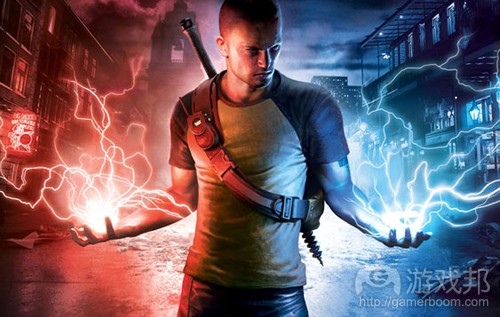

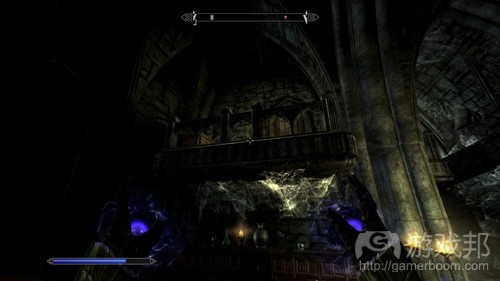
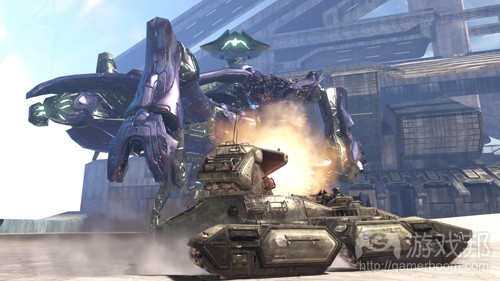

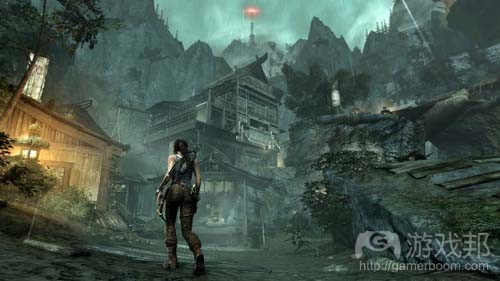
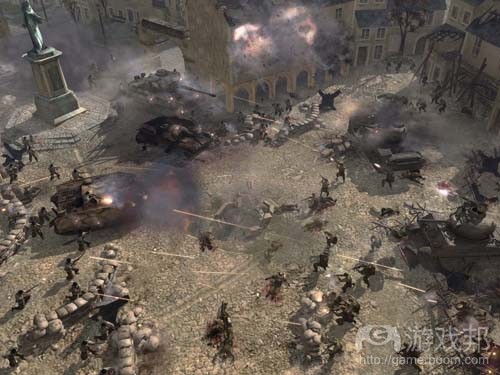
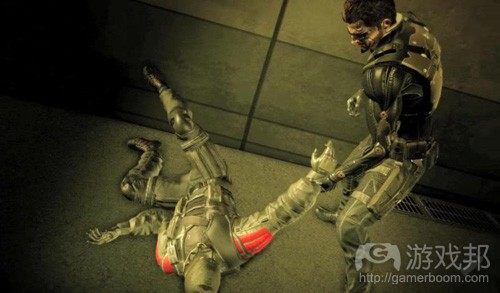















 闽公网安备35020302001549号
闽公网安备35020302001549号